Celebrating 13 years of diving in Singapore: Why Reefs Are Relevant
 April 23, 2016
April 23, 2016
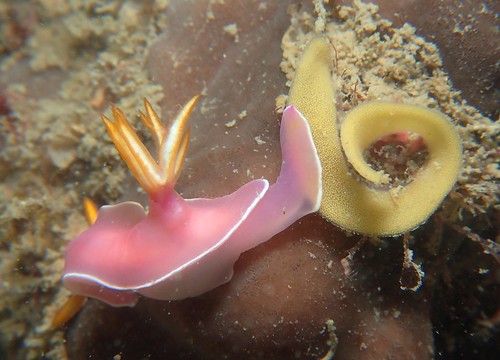
The Hantu Blog celebrated 13 years of bringing divers and reef walkers to Pulau Hantu last month! What better way to commemorate this milestone than to do more diving! Some of our most veteran volunteers who have been with us for over a decade got together with some of our most regular divers to discover more about our reefs! We continue to be surprised by the diversity of life in Singapore’s coral reefs. Divers keep coming back because there is always the possibility of finding something new or observing unusual behaviour on the reef! Above, a Hypselodoris bullocki nudibanch has just laid a ribbon of eggs – the next generation! Photographs by Toh Chay Hoon. 
The corals are the foundation of the coral reef. They provide the habitat and food that attracts all the reef inhabitants that so many divers enjoy visiting. These reefs that remain are truly very precious. Since 1950, Singapore has lost 60% of its reef to development. But if we continue to nurture an appreciation and passion for our reefs, we can play a part in protecting our reefs! If you care about our reefs, learn about them, visit them, and speak up for them! The recently launched Sisters Island Marine Park is a great way to connect with Singapore’s marine heritage! It is also a milestone in Singapore’s history as being the very first Marine Protected Area! Setting aside protected areas helps build a future for our reefs, not only for corals themselves, but for people. Through learning more about our marine habitats, we can begin to ask more questions and make our own personal discoveries, whether they be small or huge! Above: A colony of Pachyseris coral.
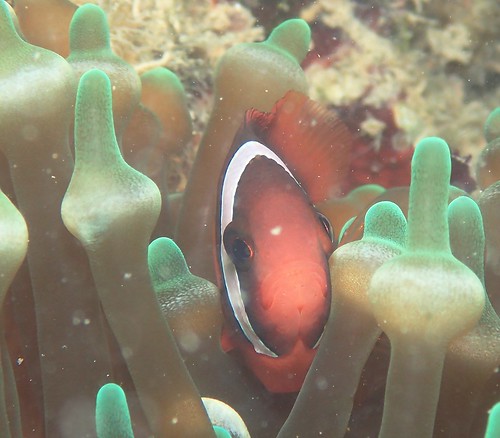
Did you know that some anemones can life up to 200 years!? We don’t really know know long these animals can live. Perhaps like some of the big slow-growing trees in temperate zones, they can keep growing and growing until some unfortunate event seals their fate. There are many species of anemones and each of them have special relationships with other animals. The most famous relationship is with anemonefish, but we often find mollusks, shrimp and other small cryptic critters living near or on anemones. Above: Tomato clown anemonefish 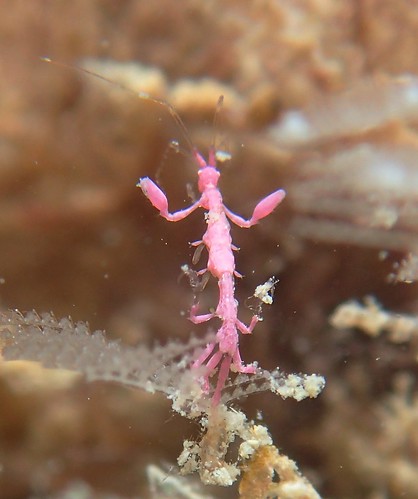
Here’s a fella not many people have met. It looks like a little man, or a preying mantis. Well, like a preying mantis they are both arthropods. But this one is obviously from the ocean and it’s called a skeleton shrimp. We usually think of shrimps as fat and juicy, but this one is quite the opposite – then and slender. The perfect body to help it disappear amongst the fine filaments of seaweed, hydroids and bryozoans. But this one it truly special, it’s pink! They are usually translucent in colour, like the colour of the hydroid this individual is “standing” on. Some species are filter feeders, but most are predators that sit and wait like a praying mantis, with their gnathopods (claws) ready to snatch any smaller invertebrates which come along. In turn, they are preyed upon by other shrimp, fish, nudibranchs, and anemones.
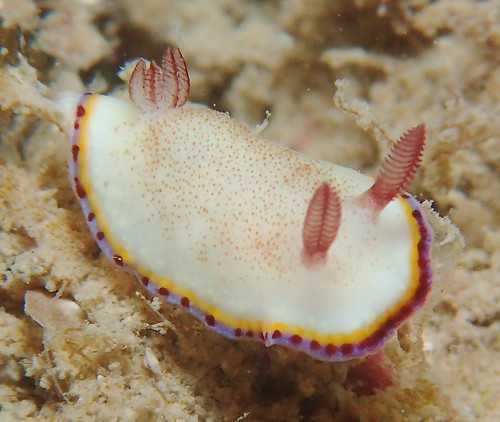
Speaking of nudibranch, since these photographs were captured by Chay Hoon, our nudichaser, we’ve got lots of nudibranchs to feature! Here’s a really cute and pretty one, Goniobranchus sinensis. Those rhinophores that look like “ears” are in fact, its nose! It uses them to sniff out a yummy meal!

Check out the translucent body of this nudibranch, Sakuraeolis kirembosa. If it wasn’t for the cerata, we would be able to see its internal organs. We can even see how the pigments are within the cerata. Nudibanchs are brightly coloured to warn predators of their toxic nature. Some nudibranchs produce their own toxins, while other store the toxins that they ingest from the animals they eat under their skin.
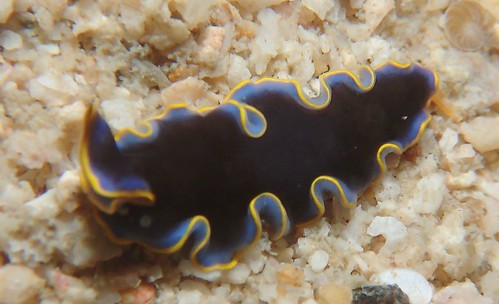
Often confused with nudibranchs, many flatworms appear to mimic the colouration of sea slugs. This can come in real handy when there is a predator about. Especially if the predator has learned that nudibanchs taste yucky. Batesian mimicry is a form of mimicry where a harmless species has evolved to imitate the warning signals of a harmful species directed at a predator of them both. It is named after the English naturalist Henry Walter Bates, after his work in rainforests that revealed similar adaptations amongst different species of butterflies.
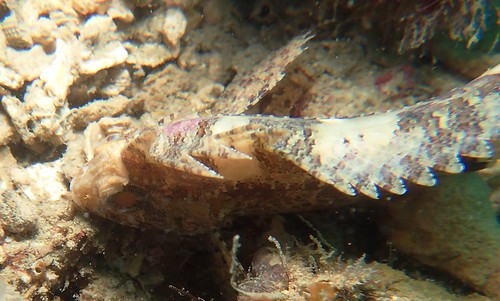
Often, when we are cruising along the reef, it may not seem like there are many critters about. That’s because many of them really want to remain hidden. Check out this False scorpionfish blending almost seamlessly with the sediment. If not for the camera flash casting the shadows behind it, it would be really hard for us to notice it! Despite its name, it is not a true scorpionfish, and is in fact harmless.
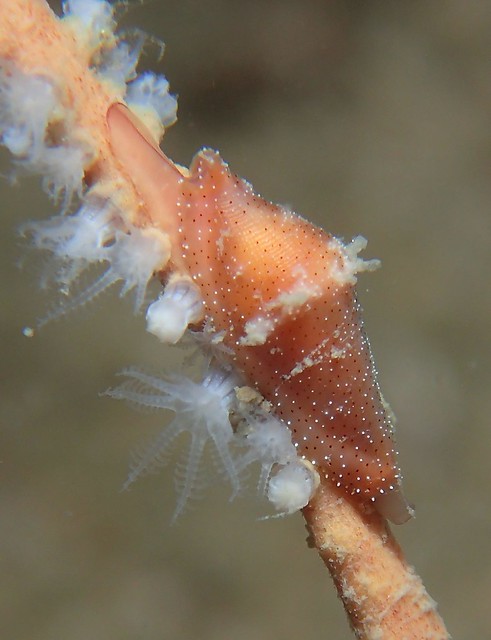
Allied cowries or ovulids, are a group of predatory or parasitic sea snails that live and feed on coral! By now you should get that feeling that everything in the ocean looks cute and pretty but are all rather vicious predators! I’m beginning to feel like that False scorpionfish (above) that had the most intimidating name was possibly the most placid amongst all these other mean little invertebrates!
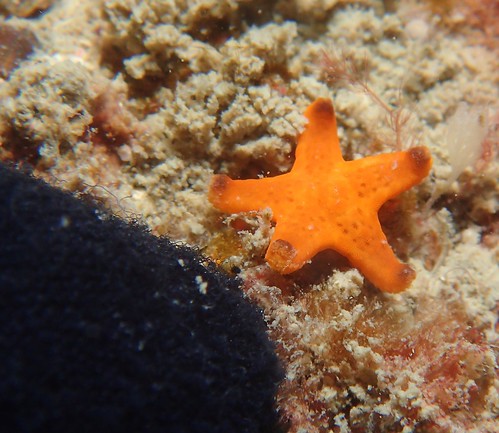
Predators come in all shapes and sizes, like this little sea star. Sea stars could be predators, scavengers, or herbivores (algae and seaweed). I wonder what this one will grow up to be.
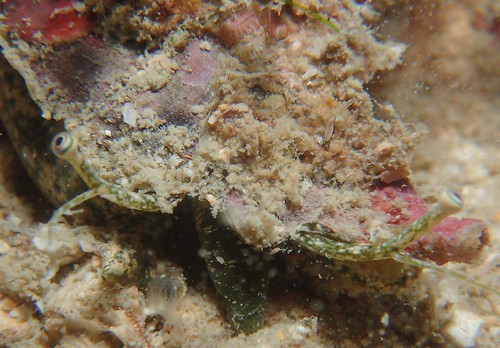
Moving on from predators to scavengers, here’s the face, or at least the eyes, of a Black-lipped conch. These animals crawl around on the seabed picking of little morsels of food scattered amongst the sand. Their shells are often encrusted with algae and can be easily missed if you are not looking for them. However, their use of a claw to drag themselves over the seabed often leaves a distinctive trail that can help divers locate them. The Black-lipped conch is listed as ‘Vulnerable’ on the Red List of threatened animals of Singapore. It used to be abundant in the 1970s but is now uncommon.
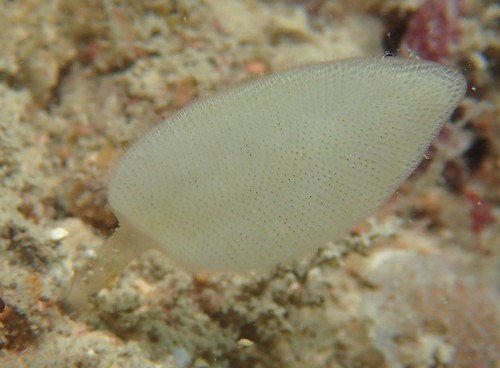
This creature that looks like a leaf is an animal known as a Bryozoan. They are filter feeders that sieve food particles out of the water with retractable tentacles. These are truly amazing animals (even though they may not look like it!) and can be found in both fresh and salt water, from the tropics up to the poles. Nudibanchs, fish, crustaceans and sea stars are all predators of bryozoans. A group of chemicals called bryostatins extracted from a marine bryozoan species have been investigated for treatment of cancer and Alzheimer’s disease. Because 1 tonne of bryozoans must processed to extract 1 gram of bryostatin, efforts have been made to develop synthetic equivalents that are apparently as effective. At a glance, it may seem like these marine animals and habitats are not relevant to us. What difference would it make if they were there or not? How does a bryozoan living at the bottom of the sea make a difference to my life? The trouble is, there is so much we don’t know. Not knowing the difference it will make is not the same as knowing that it doesn’t make a difference. We have a great deal to learn and benefit from keeping our marine systems in tact. They are more than “natural apothecaries”, they also keep our water clean, defend our coastlines against environmental hazards, add value to our coastlines, and keep us alive by feeding us. From seaweeds to salmon, and a safe beach to swim in, our oceans are more relevant to us than we are yet to realise.

Thank you for sharing 13 years with us!
To view more photos from this trip, flick through the album below!

 Posted in
Posted in 



 content rss
content rss
COMMENTS